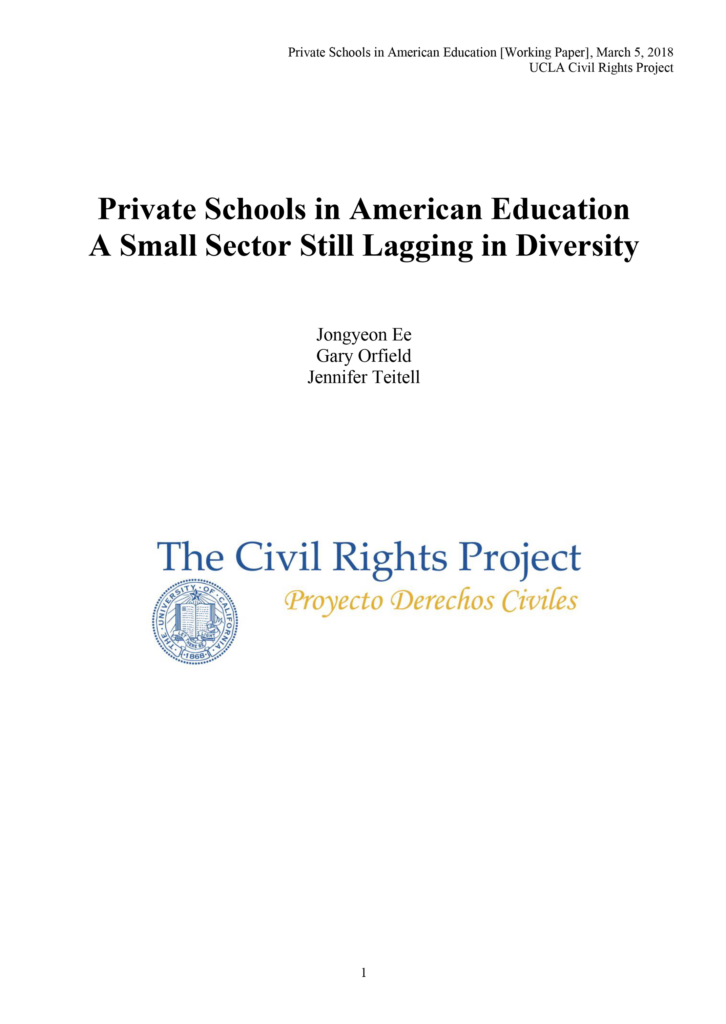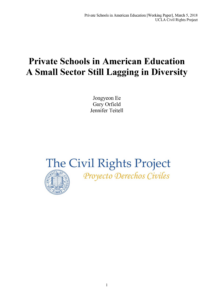Private schools have a long and important tradition in U.S. education and have been the focus of a great deal of political controversy in recent years. There is deep division among Americans over the desirability of using public funds to finance vouchers for private education—an issue that has become the leading educational goal of the Trump Administration. Surveys of the public show that substantial majorities of Americans do not favor voucher policies, yet these efforts have long been supported by significant shares of the public, the religious groups that operate nonpublic schools, and leaders of one of our national parties. This deep division is reflected in the extraordinary differences among the states in their adoption of voucher policies over the past two decades. Examining these differences, along with data on national and regional trends in private education, provides a useful framework for considering the relationship between private school enrollment and the impact of voucher policies.
This report explores how the size and share of private education has changed in the U.S. over two decades, from 1995 to 2015-16 (the most recent federal data), along with how the students are divided among different kinds of private schools: secular, Catholic, and non-Catholic religious schools. It also examines the racial composition of these schools, providing key data for evaluating the civil rights dimension of private schooling and voucher policies. The civil rights questions concern how well private schools serve students of color, what kinds of schools these students attend, how segregated they are, and whether students of color are getting a major share of the growth of private schools in the areas they are growing, especially in the South.
Key findings of the report include:
- Student enrollment in private schools peaked in 2001 and has moderately declined over the past fifteen years. In 2015, private schools served 9 percent of the nation’s students and accounted for 28 percent of the nation’s schools.
- Private schools seem to compete with charter schools. Since its appearance a decade ago, the growth of charter schools is noticeable. In 2015, private schools serve 4.9 million students while charter schools enroll 2.7 million students.
- The 2015 racial composition of private school enrollment was 68.6% white, 9.3% black, 10.4% Hispanic, 6.9% Asian. The student body of public schools differed substantially from private schools, comprising 48.7% white, 15.2% black, 26.3% Hispanic, and 5.4% Asian students,
- Private school attendance rates among white students have not changed over time—one in eight white students in the nation attend private schools. Meanwhile, private school attendance rates among non-white students have slightly declined. As of 2015, 5.6 percent of blacks, 3.8 percent of Hispanics, and 11.3 percent of Asians in the nation are enrolled in private schools.
- Student from low-income families are underrepresented in private schools, accounting for 9% of the private school student body. The secular sector in particular has the smallest percentage of poor students: 5.4%. In public schools, poor students make up more than 50% of student enrollment.
- White students are overrepresented in private schools, making up 69 percent of private school enrollment; they comprise 51 percent of total enrollment of school-aged population in the country. African American and Hispanic students are severely underrepresented in private schools. The latter comprise over 25 percent of students in the public sector but only 10 percent of students in private schools.
- The South has seen an 11% increase in the number of private schools—non-Catholic religious schools in particular—over the past two decades unlike other regions in which private schools have declined over years.
- The number of Catholic private schools and Catholic school enrollment have decreased over the past two decades in the Northeast and Midwest in particular. Enrollment in non-Catholic religious private schools and secular private schools has grown during the same period. The growth of non-Catholic religious schools stands out in the Northeast and the South in particular.
- The South has the largest number of schools for both private and public sectors, which account for one third of the country’s schools. Given the number of schools for both private and public systems, private schools are most overrepresented in the Northeast.
- Black and Hispanic private school students on average experience more diversity compared to their peers in public schools. White students are the most isolated group in terms of intergroup contact, and white students in the non-Catholic religious sector across regions have the most limited intergroup experiences, typically attending schools with large white majorities.
- The secular sector has seen the largest increase in diversity over time compared to Catholic and non-Catholic religious schools, although the level of diversity does not reach the same level of public schools.

